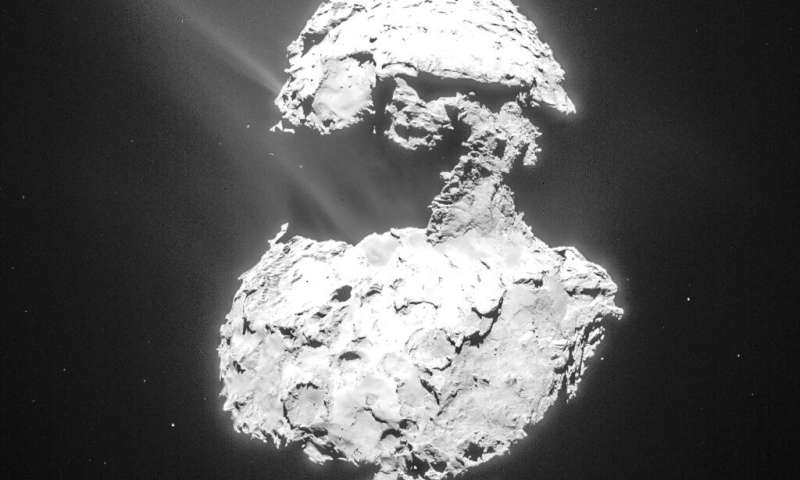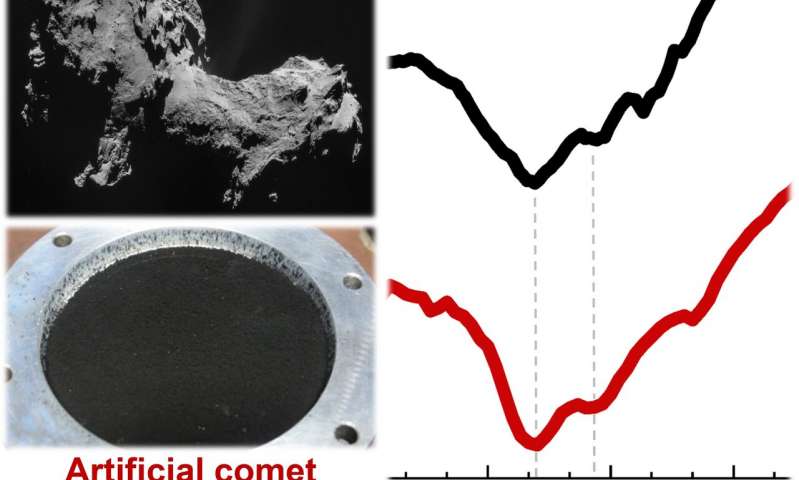One of the basic building blocks of life is said to be nitrogen – in one form or another. Now we have the discovery of salts containing nitrogen in Comet Churyumov-gerasimenko. In fact, ammonium salts (back in 2014/2015). This is thought to support the idea life originated in space. See https://phys.org/news/2020-03-puzzle-nitrogen-cometary-analogs.html … and https://doi.org/10.1126/science.aaw7462 …


PS … ammonium spikes are a pointer towards cometary interactions with earth's atmosphere as suggested by Mike Baillie in his book, 'New Light on the Black Death: the Cosmic Connection' Tempus:2006. This new research, derived from the Rosetta Mission, appears to support the theory. Whereas low growth tree rings events (Baillie's speciality) represent environmental downturns of some kind that involved cool summer weather, these must primarily infer volcanic eruptions dispersing large amounts of gases, ash, sulphur etc., high into the atmosphere. The possibility of meteoric dust trapped in the atmosphere may perhaps also cause a similar cooling (simply by creating an opaque atmosphere that tended to reduce the amount of insolation reaching the surface of the earth). The ammonium spikes at disparate times (usually from ice core data) may well be a signal of a cosmic vector.
Also of interest, at https://archaeologynewsnetwork.blogspot.com/2020/03/cosmic-impact-may-ha… … which is a further report on Abu Hureyra, destroyed by a cosmic blast. James Kennet, emeritus professor of geology at UC Santa Barbara, is quoted liberally at the link. He is of the opinion that only a high energy velocity vector could have created so much glass melt. It continues to quote extensively from him but the final paragraph is also of interest as he says a single asteroid would not have caused the widely scattered destructions (or black mat layers) as we see in the geological record around the onset of the Younger Dryas period. He points a finger at large cometary debris clusters capable of causing thousands of airbursts. This is classic Clube and Napier as a comet breaks up it forms streams of debris (with large and small pieces of fractured comet) that are dense within the first few orbits through the inner solar system but over time tend to dissipate to greater and greater widths, with mostly the smaller debris at either side of the meteor stream and the larger pieces still tracking the original trajectory inside the meteor stream. Presumably this implies a break up just prior to the Younger Dryas event and the earth falling foul of the newly formed meteor stream. The damage on the surface of the earth would be down to the effects of blast (the pieces of comet exploding as airbursts in the atmosphere) which generated a lot of heat (as in a nuclear explosion). It now looks like the Younger Dryas boundary event team have embedded at least some of the ideas of Clube and Napier within their scenario. This, we may note, will allow them to expand the theory to other well known boundaries. Good thinking. In other words, if a large centaur comet was involves, it will have gone through a succession of break ups, leading to a succession of newly formed dense streams of material.
